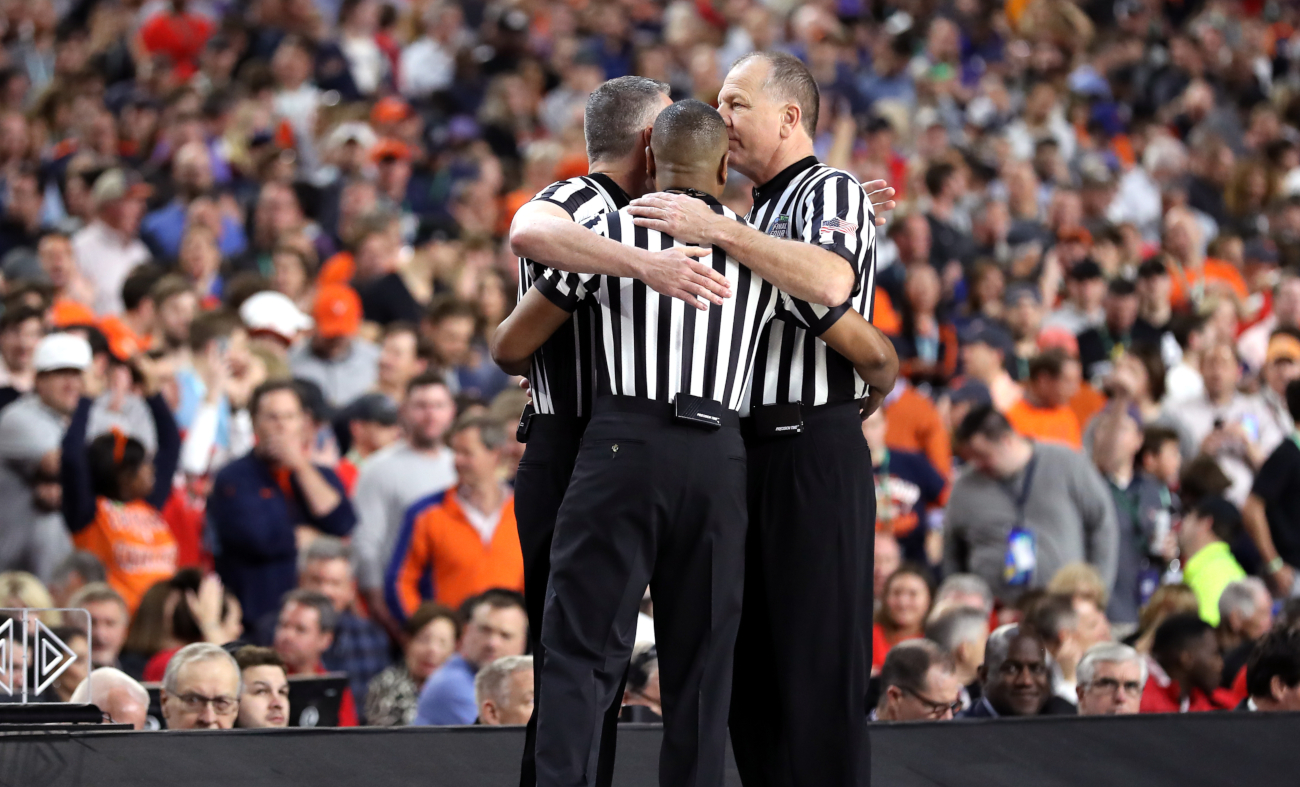
Instant replay is always a divisive topic in sports, and it’s inevitably discussed ad nauseam following a big game where it plays a decisive role in the outcome.
On Monday night, the instant replay discussion came up again in Virginia’s 85-77 overtime win over Texas Tech in the national championship game in Minneapolis. The Cavaliers only had a two-point lead with a minute to play in overtime and got some assistance from a replay review that gave them possession when De’Andre Hunter stripped Davide Moretti.
The initial call was Texas Tech ball, as it would be at every point in the game not inside the final two minutes. However, because it was within those last two minutes, the officials went to the monitors and slowed it down, determining that it had, in fact, grazed Moretti’s hand after Hunter was no longer touching it, thus giving the ball to Virginia.
bballsociety_: Out of bounds call Texas Tech-Virginia CBS CBS 2 News at 11 https://t.co/v8dVFjwdv7 pic.twitter.com/IULsvzqVKX
— FanNewsClips (@FanNewsClips) April 9, 2019
This is the correct call by the letter of the law, even if it’s by the slightest of margins. In theory, this is what replay review is supposed to do. They did the same thing late in regulation to see if a ball glanced off a Texas Tech player on a similar play, and ruled it did not even though it was, similarly, very close. In both situations, it was hard to fault either decision by the referees looking at the play and they made the calls according to the rulebook.
That, however, is the issue. The refs here didn’t make incorrect calls and job Texas Tech. The way replay is used in these situations to determine possessions, though, runs counter to how basketball is called at all other times of the game, when possessions are also critical. In every game there are examples of a play exactly like the one between Hunter and Moretti where, 10 out of 10 times, the ball stays with Texas Tech. When a ball is poked away by the defense, unless it changes direction from contact with the offensive player, it stays the offense’s possession. The same goes for, say, blocks on layups.
Physics dictate the person with the ball is, more often than not, going to have the ball actually touch them last before it goes out of bounds if it is knocked out of their hands. That doesn’t matter for the vast majority of the game, because everyone knows who caused the ball to go out of bounds — again, if it’s swatted in one direction, and the flight of the ball clearly changes because it bounced off the offensive player, that’s a different story.
However, that changes totally in the final two minutes, which goes against what replay should be doing. Replay is to make sure calls aren’t missed and human error is limited in crucial situations, but when it fundamentally changes how a game is called, that seems to be a problem. When broken down into a slow-motion, frame-by-frame look, basketball looks very different and, as such, is going to yield very different results for referees.
That’s not to say replay isn’t a useful and good tool, but the way it’s used in situations like these needs to be examined. It’s one thing if you’re looking at two players going for a loose ball to determine who hits it last. It’s another to look at who touches it last when the offensive player has possession, only for it to be knocked away by a defender.
In the former, referees at all times are at least trying to determine the actual last person to touch the ball. In the latter, for 90 percent of the game, they are not unless it impacts the direction of the ball once the defender has touched it. Unless you’re going to open replay up for all issues of possession at any time during the game (which would make games interminably long), it’s going to cause issues in situations like this.
Possession issues, in particular, are unique in this regard because the intent of the referees’ decisions changes so dramatically. In nearly every other situation that replay looks at, they’re trying to accomplish the same goal as the officials on the floor, whether it’s looking at whether a block off the backboard was a goaltend, if a player steps out of bound, or had their foot on the three-point line/restricted area. In all of those instances, the intent is the same, but for possession issues with a ball in control being knocked away, it’s a dramatic change.
This isn’t suggesting abolishing replay or even not using it for possession situations, it’s to redefine what they’re looking for. A clear change in direction of the ball from a deflection, just as referees are trying to determine in real time, should be looked at. Whether the ball technically grazes through the offensive player’s hands after the defender’s hand is no longer in contact with the ball on a steal or block, shouldn’t be.
You’ll never please all the people all of the time, and if replay were to change how it enforces these sorts of plays, there would no doubt be backlash and screenshots showing how someone touched it. However, it would seem to make more sense to be able to explain why that rule change was put into place — because they’re trying to stay consistent with how the game is called the rest of the time — rather than suddenly becoming worried about something that isn’t a concern or thought for referees at any other point of the game.






